Octachoroux Method
Contents
Octachoroux Method
This method is Rowan Fortier's 4 dimensional equivalent of the Roux method. It aims for a more intuitive blockbuilding approach, and requires fewer algorithms that need to be memorized. The name Octachoroux comes from the word octachoron (which is another word for tesseract) and Roux.
Prerequisites
- Knowledge of how the puzzle turns, and Zhao Notation
- Knowledge of blockbuilding and the Roux method on the 3^3
- Knowledge of names of 4d pieces and the concept of RKT
Summary of the Method:
- First Block: Solve a 1x2x3x3 block using blockbuilding techniques
- Second Block: Solve a 1x2x3x3 on the other side of the puzzle to complete your First 2 Blocks
- CMLC: Orient and permute the corners of the U cell
- L/R: Solve the Left and Right cells
- M Slice: Permute the M slice
First Block
Pick the colour of which first block you will be starting with. If you normally start with White or Yellow on D and any colour on the side, that would make you x2yw colour neutral.
Build a 1x2x3x3 block. You could solve the 2c pieces first, and then use the K cell to easily pair up pieces without disturbing your progress on the T cell. Then you can just bring those pairs onto the T cell and insert them using -K moves as normal 3^3 twists.
Once this step is completed, hold the first block on the left, just as in normal Roux.
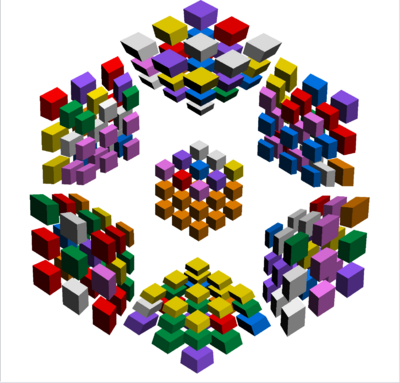
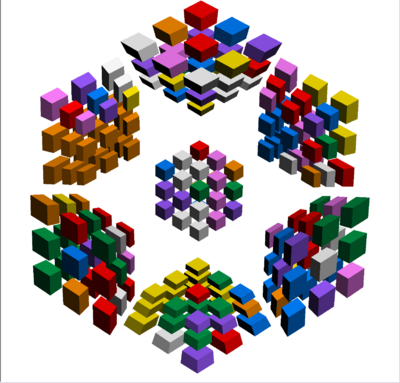
Second Block
Make the same 1x2x3x3 block, just on the other side. Start with the DR 2c piece. After that you can solve the other 4 2c pieces by bringing them to TU and doing RF TF' RF' to insert them. You can use many of the same tricks from the 3^3, such as hiding an edge in TDF and then rotating the U cell to bring the corner the edge pairs up with onto the T cell, then connecting them with M moves. RKT is necessary to insert pairs without messing up the first block.
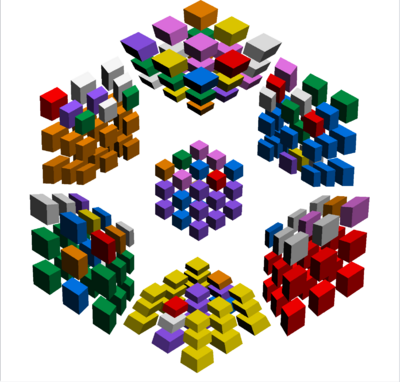
CMLC (CO)
Bring the U cell to T, then use RKT to set up a layer so that it looks like a normal OCLL case, then bring the T cell to U. Hold that case so that it is in the D layer of the U cell, as shown in the image below, and use RKT variants of OCLL algorithms to orient those pieces.
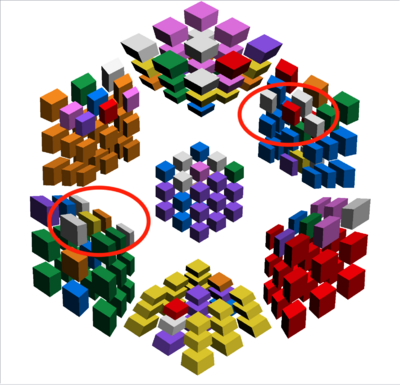
Repeat this until all the corners are oriented. If you just have 1 corner left to twist, a good intuitive way to do this is to untwist 2 other corners, then use RKT to set that up in to a Sune case. You can also use the Monoflip algorithm described in the Sheerin-Zhao method above.
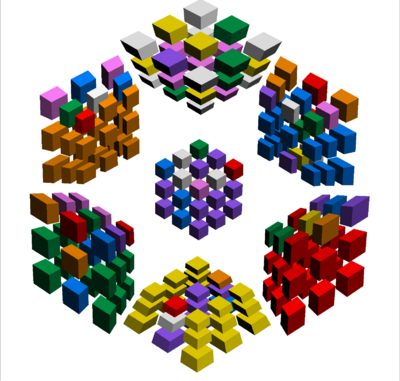
CMLC (CP)
Now bring the U cell to T and use RKT to permute it like a regular 2x2x2 Rubik's cube. If you get a parity where a layer ends up being off by 180 degrees, use the RKT parity algorithm:
TU UR T[LFU]' UK' TF RF UR RF' U[TR]
It will look like this when it is done. Rotate the T cell back to the U cell
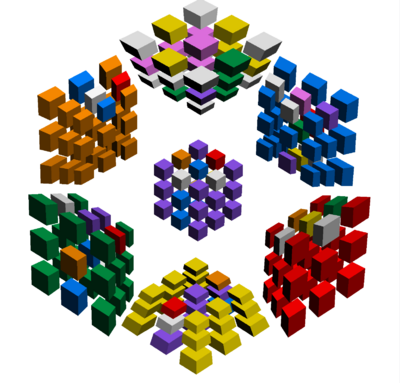
L/R
Instead of orienting the edges like in 3^3 Roux, just go directly to solving the Left and Right cells of the cube. The reason why will become apparent later.
First solve the 2c pieces with the L/R and U colour.
Now you setup edges that need to go to L/R into the TDF spot with the L/R colour on the T cell and the U colour on the D cell. Then move the spot where that L/R edge needs to go above that edge and insert that piece using the RKT algorithm of M D2 M' D2 (2RK' TF' RK2 TF 2RK TF' RK2 TF)
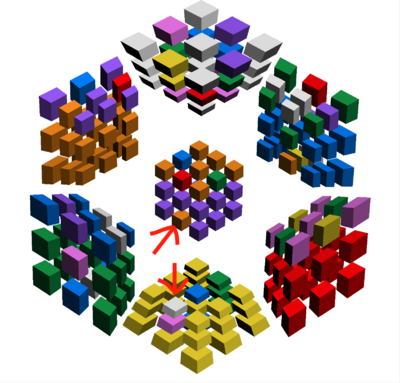
There are 8 edges total that need to be inserted for L/R do be complete.
M slice
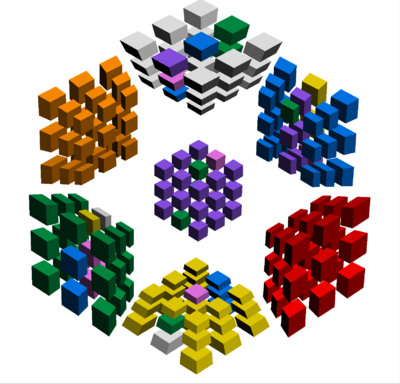
Now all you have to do is permute the M slice. This step is pretty similar to PLL from Sheerin-Zhao method, but with some key differences.
- Pieces have the same number of colours as they do on the 3^3. Corners pieces have 3, edges have 2, etc.
- Pieces can look "mirrored"
- There is no RKT parity
Now you can either use UR moves as U, U', U2 moves, and M slice rotations to do RKT (called URM), or rotate to bring one of the L/R sides to the T cell and use normal RKT, except you have to hold down 2 on your keyboard in order to do T moves.
There are some interesting "parities" you might encounter that are impossible on both the 3^3, and the 3^3 last layer of CFOP 3^4. Such as:
- Corner pieces that look "mirrored"
- Impossible Last Layer/CMLL(/whatever method you use) cases
If you solve the M slice using CFOP, then once you get to PLL, you can rotate the puzzle so that the U cell goes to T, and then orient the edges onto the T cell and then permute that like step 4c of the Roux method.
If you solve the M slice using Roux, then look forward to impossible CO and CP cases from 2-look CMLL.
An algorithm that is super useful here is a pure 2-flip of 3c pieces. I use M' U M' U M' U M' U2 M' U M' U M' U M' using RKT.